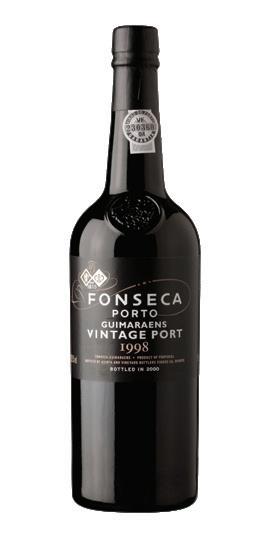
3 minute read
Port Any in a Storm
Jon Atkinson on why this Portuguese potion isn’t just for Christmas
I LOVE THIS MOST FAMOUS of fortified wines and only wish that I could justify drinking it on a more regular basis. Mrs Wine Time and I did briefly flirt with the idea of having a glass of port instead of opening a second bottle of red on those occasions when we fancied an extra glass or two… those who know me won’t be surprised to hear that the singular ‘glass’ invariably multiplied so the idea was sadly, but inevitably ‘mothballed.’
Advertisement
I know plenty of people who maintain that port always gives them a hangover, although they invariably seem to forget about the gin & tonic, white wine, red wine, etc that went before it – surely port shouldn’t take all the blame for one’s earlier excesses! The bottom line is that port is delicious and deserves far
Kopke Late Bottled Vintage 2018
greater appreciation – one just needs to bear in mind that it is typically 30 – 40% stronger than most red table wine so think ‘quality rather than quantity’ when drinking it, indeed this is a good mantra to apply to pretty much all drinks!

So, what exactly is port? In short, it is a fortified wine, that is to say, a wine in which the natural fermentation has been arrested by the addition of grape spirit (brandy). In the case of port, this both increases the alcohol to the region of 20% but also ensures that there is a good amount of residual sugar to sweeten the wine. In the trade, we tend to divide port into wood-matured and bottle-matured, although in truth most port will spend at least a short spell in wood. A more practical division might be between ruby and tawny, with better-quality examples of the latter spending significantly longer in barrel which is where its tawny colouration and more savoury characteristics develop.


As its name implies, ruby has a more vivid colour with the wines typically being more fruity and spicier than their wood-aged counterparts. This ‘category’ includes vintage port, which needs (plenty of) time to mature and should also be decanted, and the more ‘accessible’ LBV (late bottled vintage) which aims to replicate the style of vintage, but without the ‘fuss’. Port is also made as white and rosé and whilst both styles could be considered ‘niche’ they do enjoy a loyal, albeit relatively small following.
This delicious LBV is made from a blend of native varieties including Touriga Nacional and Tinta Roriz resulting in a port that has a vivid purple-ruby colour with intense, spicy aromas of plum and damson. The palate is intensely flavoured with dark chocolate, ripe plum and peppery notes. Aged in wood for four to six years, LBV is released when it is ready to drink with no decanting required and once opened a bottle can (potentially!) be kept for a couple of months or more. £19.50
Ramos Pinto ‘Quinta da Ervamoira’ 10-year-old Tawny
RP owns four individual Quintas (farms) in the Douro, totalling 286 hectares, which provides for all of their needs. Qta da Ervamoira is in the Douro Superior and lends its name to this outstanding 10-year-old Tawny which has an attractive, pale mahogany colour with seductive aromas of candied fruits and walnuts. The palate is both rich and smooth with flavours of raisins and prunes with underlying, spicy oak and a hint of dark chocolate. Tawny is a surprisingly versatile drink, delicious served chilled as an aperitif as well as in the usual post-prandial contexts. Again, no need to decant or polish off all in one sitting! £39.50
Fonseca ‘Guimaraens’ Vintage Port 2008

Fonseca is a very highly-regarded, ‘blue-chip’ producer that was established in 1815 with a reputation for superlative vintage ports. Guimaraens is actually a second label that was conceived in the 1950s to feed a surge in demand for vintage port. It is produced in ‘non-classic’ vintages so, whilst it does not have the concentration or complexity of Fonseca vintage, it is released pretty much ready to drink. It does still need decanting however and as such is best reserved for those gatherings where it will be consumed in one sitting. All in all, a fantastic finish to a good meal with good company. £34.50
Lou Miranda Estate ‘Leone’ aged Tawny
Okay, so this one isn’t actually port, at least it can’t be called port because it comes from the Barossa Valley in Australia. Port is a protected designation and can only come from the Douro Valley in northern Portugal. That being said, this is rather splendid, if a little sweeter and richer than a regular Tawny port – made at Lou Miranda Estate, a boutique Australian producer which produces an excellent range of fortified wines. This one makes friends very easily including Oz Clarke no less when we showed it at a Three Wine Men tasting some years ago. £21










